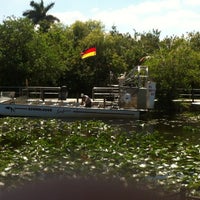

Florida Cottonmouth (aka Water Moccasin) (Agkistrodon conanti)įlorida Cottonmouth (aka Water Moccasin) (Agkistrodon conanti) is the most common venomous snake in Florida

When threatened, the Southern Watersnake flattens its body and head to seem larger to predators. The typical diet consists of aquatic or semi-aquatic animals like frogs, toads, and fish, occasionally snacking on tadpoles and salamanders. We still don’t recommend picking one up as they will readily bite you in defense despite their preference to run from humans. As they age, Southern Watersnakes tend to darken, with some individuals turning completely black.ĭue to their similar coloration and size, Southern Watersnakes are often confused with the venomous Cottonmouth (Water Moccasin) but don’t worry, a bite from a Southern Watersnake won’t send you to the hospital. Ranging in length from 22” - 42”, these stout-bodied snakes wear broad black, brown, or red crossbands on their backs sandwiched in between lighter tan, grey, or reddish bands. Strangely, this particular species and its cousins, the Florida Green and Brown Watersnakes, are not found in the Florida Keys. As their name implies, these snakes can be found in freshwater bodies like ponds, lakes, marshes, and streams. Did you know?Īn alligator or crocodile with its mouth open can look menacing, but the reason they keep their mouths open is to regulate their body temperature while out in the sun.īanded Water Snake (Nerodia fasciata) spend much of their lives in the waterĬommonly found throughout Florida, the non-venomous Banded Watersnake, or more commonly known as the Southern Watersnake, is well adapted to the Everglades ecosystem. Contrary to the aggressive reputation, American Crocodiles tend to be shy in nature and would more likely run away from you rather than towards you. Unlike their Australian and African crocodilian cousins, it’s not common for the American Crocodile to attack larger mammals. Crocodiles eat pretty much anything that moves but typically go for fish, crabs, turtles, snakes, and small mammals, mostly feeding at night. In comparison, crocodiles have long and narrow v-shaped snouts, while alligators have shorter U-shape snouts. Adult male crocodiles have been measured up to 20 feet in length though it is rare for them to reach that size, adult females tend to be about 8 to 12 feet. They can typically be found in Cuba, Jamaica, Haiti, Dominican Republic, Mexico, and Central and South America, too. The American Crocodile ( Crocodylus Acutus) inhabits both fresh and saltwater ecosystemsĪ distant cousin of the American Alligator, the American Crocodile, is known to inhabit coastal areas of South Florida as well as brackish water and saltwater habitats. The American Crocodile ( Crocodylus Acutus) Did you know?Īlthough alligators have incredible power to close their jaws, the muscles used to open their mouths are very weak, making it easy for even a human to hold their jaws shut. The American Alligator’s typical diet consists of fish, turtles, small mammals, birds, reptiles, and even small and juvenile alligators. Their color can range from dark green, gray, brown to nearly black with a cream-colored underside. These massive reptiles can range between 11 to 15 feet for males and 8 to 10 feet for females and primarily inhabit swamps and marshes, although it’s not uncommon to find them in other bodies of water like lakes, rivers, and ponds. And, if you happen to find yourself exploring in the cooler months, you can bet you’ll see these famous reptilian predators getting some sun on the grassy banks of the pristine Everglades waters.

Today, American Alligator populations continue to grow and thrive all over Florida.

Thanks to conservation efforts, their populations rebounded well enough to be removed from the endangered species list in 1987. The American Alligator ( Alligator Mississippiensis) can be found in the freshwater habitats of the Florida Evergladesĭue to overhunting, the American Alligator once found itself on the endangered species list prior to the enactment of the Endangered Species Act of 1973.


 0 kommentar(er)
0 kommentar(er)
